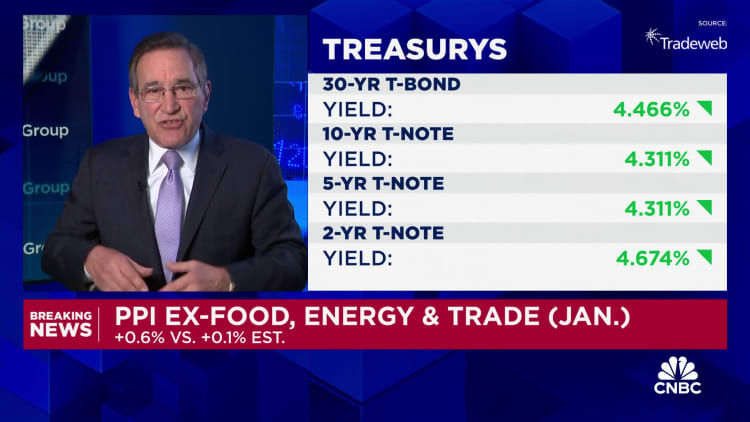January Wholesale Prices Rise More Than Expected, Reflecting Inflationary Pressure

Wholesale prices in January have surged beyond expectations, contributing to the growing concern over inflationary pressures in the economy. The recent report from the U.S. Department of Labor indicates a significant increase in the producer price index (PPI), which measures prices received by domestic goods and service producers. Economists surveyed by Dow Jones had predicted a 0.1% rise, but the PPI surged by 0.3%, marking the largest movement since August. This comes after a 0.2% decline witnessed in December.
Core PPI Soars Above Expectations
When excluding food and energy, the core PPI saw a remarkable increase of 0.5%, defying expectations for a mere 0.1% gain. Moreover, the PPI, excluding food, energy, and trade services, experienced a significant surge of 0.6%, the highest monthly growth observed since January 2023.
This report follows closely after the release of the consumer price index (CPI), which demonstrated persistently high inflation rates, challenging the Federal Reserve’s expectations of a moderation throughout the year. Although the CPI decreased from its December level, it still remained at an elevated 3.1% compared to the Fed’s target of 2% inflation. The core CPI, which the Fed considers as a long-term measure of inflation, rose by 3.9%.
Implications on Financial Markets
The market reacted sharply following the CPI reading, and concerns arose that a strong PPI number could cause further disruption. Expectations had been growing that the Fed would take advantage of the easing inflation figures to aggressively cut interest rates in 2024. However, these expectations have been scaled back in recent days due to unexpected persistency in inflation.
As a result of the PPI report, stock market futures declined, and there was a surge in Treasury yields. Just a few weeks ago, markets had anticipated the first Fed rate cut in March, but this projection has now been revised to June. Policymakers have expressed caution, emphasizing the need to maintain the fight against inflation and acknowledging the stability of the overall economy.
Factors Driving Wholesale Price Increase
The wholesale index’s growth was primarily propelled by a 0.6% increase in final demand services, particularly driven by a significant 2.2% uptick in hospital outpatient care. However, goods prices experienced a decline of 0.2%, mainly due to a 1.7% decrease in final demand energy, with gasoline prices sliding by 3.6%.
When considering the 12-month basis, headline PPI exhibited a mere 0.9% increase, slightly lower than the 1% level observed in December. Nevertheless, when excluding food, energy, and trade services, the index rose by 2.6%.
Retail Sales Decline Further
In addition to the concerning inflation readings, the Commerce Department reported a substantial 0.8% decrease in retail sales for January, surpassing initial expectations. This decline raises further questions about the strength of the overall economy.
For more information on the latest developments in business and finance, visit Business Today here.

